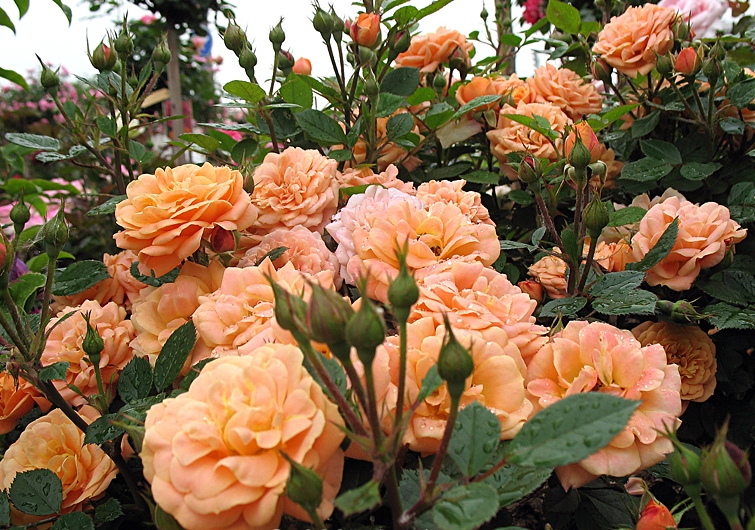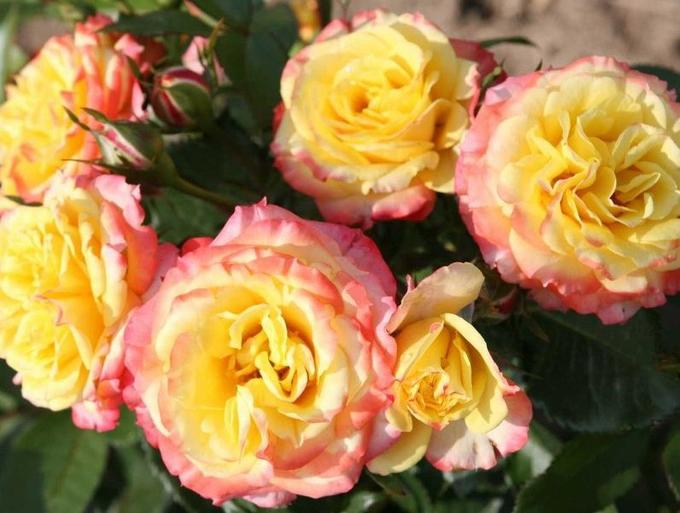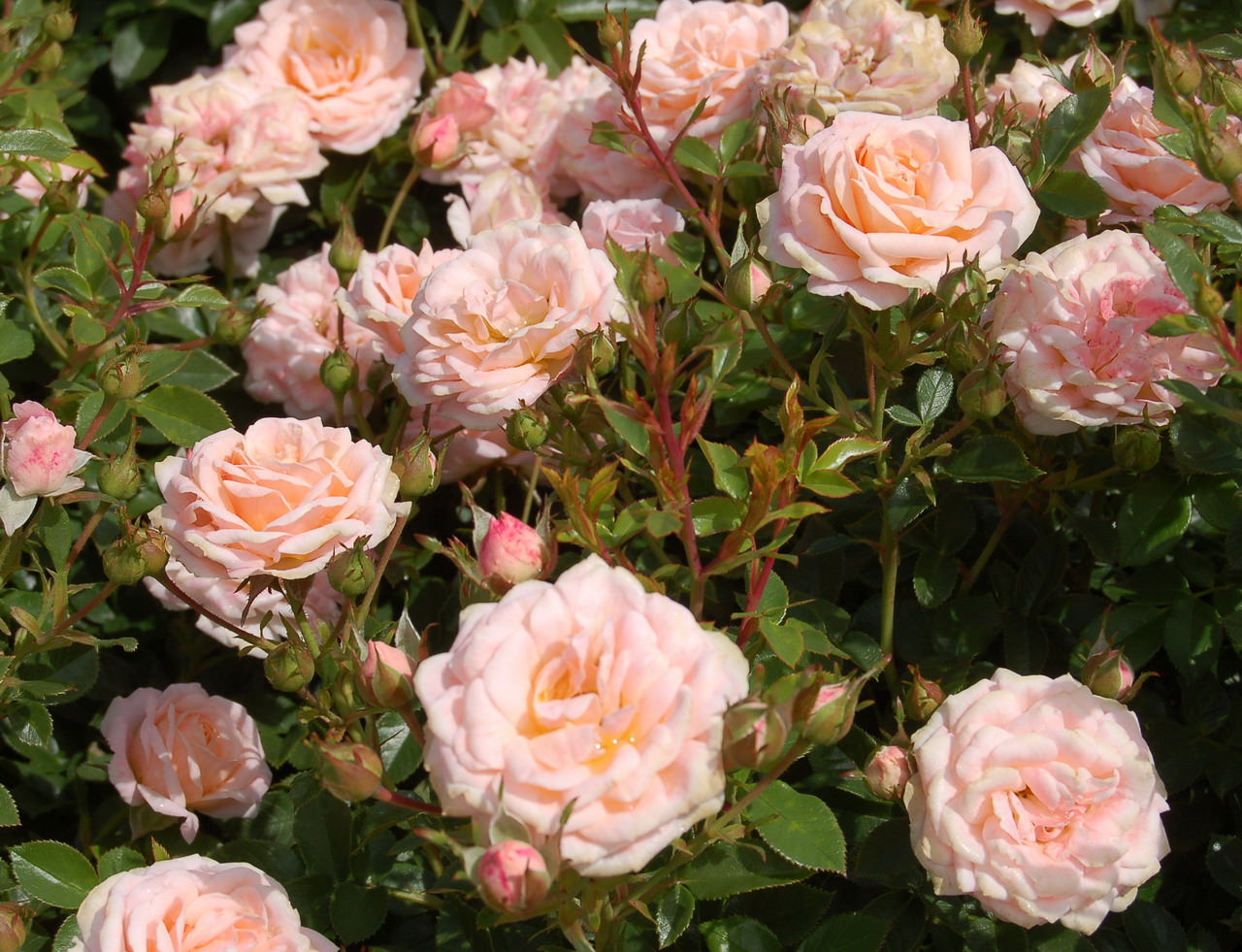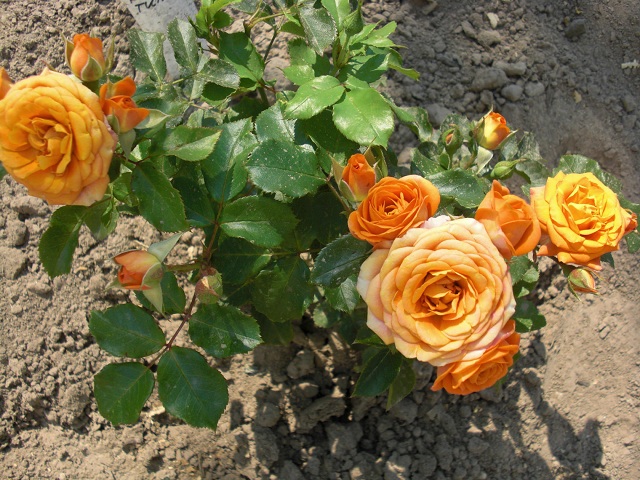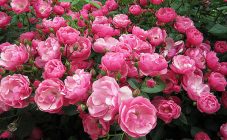Content:
The Clementine variety, which managed to find the love of many admirers in a short time, belongs to the group of miniature roses. They bloom throughout the summer until late autumn and attract with a light characteristic refined aroma, brightness, expressiveness and decorative color of graceful double inflorescences arranged in the form of brushes and in perfect harmony with the lush glossy foliage.
The species is suitable for growing outdoors and in containers. He is not too pretentious in care, it is not necessary to have professionalism to breed these flowers, they can be successfully grown by an amateur.
Description of Clementine rose
Bred recently in a German nursery and first described there, Clementine rose is a shrub with very strong flowers of strikingly beautiful shades from soft salmon to apricot orange. Lush branchy bushes reach a height of up to half a meter, in width - the same.
The variety has a long flowering period. The advantage of the variety is excellent resistance to diseases with powdery mildew and black spot. Rose Clementine is winter-hardy: it can withstand temperatures down to -23 degrees.
Popular varieties of roses
There are several popular varieties of the variety, each of which has its own characteristics and advantages, has its own admirers, and has individual characteristics.
These include:
- Apricot rose Clementine;
- Tropical Clementine rose;
- yellow Clementine rose;
- rose Peach Clementine.
Apricot (Epricot) Clementine
The Apricot variety, bred in 2001, is characterized by:
- bushes height from 40 to 60 cm;
- light, subtle aroma;
- long flowering;
- excellent winter hardiness;
- the possibility of growing in the open field and in containers.
Rose Epricot Clementine belongs to the decorative climbing species. It differs in small - from 4 to 6 cm in diameter - terry inflorescences that change color from light yellow-pink to peach. The color is retained even in direct sunlight. The flowers in the form of a pompom at the Epricot rose are collected in large brushes, which retain their decorative qualities for a long time.
Chile Clementine
Lush rose miniature Clementine, about half a meter high, bred in 2005, is intended for pot and container growing. The variety has a red color of double flowers with orange strokes, changing towards the end of flowering to fuchsia.
They are collected in inflorescences that look spectacular against the background of glossy dark green foliage. Each flower up to 4 cm in diameter consists of three or four dozen petals that are not damaged by sunlight and weather disasters. Chile rose Clementine has a light aroma and long flowering, is resistant to diseases and is considered a frost-resistant species.
Rose Peach Clementine
The bush, which is easy to cultivate, usually grows up to 60 cm and up to half a meter wide. The species has a faint aroma of beautiful double flowers, iridescent in different shades - from cream and peach to pinkish.
Flowers that do not fade for a long time, grouped in large inflorescences, always look spectacular and colorful until late autumn. The advantage of the Peach Clementine rose variety is its resistance to infection, rainy weather and cold weather.
Rose Yellow Clementine
An upright, fast-growing, lush shrub of a hybrid tea shape with bright green foliage, it is distinguished by double delicate golden flowers in diameter from 3 to 5 cm, containing from 26 to 40 petals, which fade by the end of flowering and turn white. The variety is characterized by:
- lack of aroma;
- long flowering;
- disease resistance;
- frost resistance;
- ease of cultivation.
Tropical Clementine
An original miniature variety with a height of 30 to 50 cm, distinguished by double inflorescences of light orange color, effectively shaded by dark glossy foliage, and a delicate citrus aroma. The color of the petals changes during the opening of the bud, acquiring a light pinkish tint. Tropical Clementine roses are distinguished by a fairly long flowering and good frost resistance.
Growing Clementine Roses
Miniature rose shrubs for open field and container cultivation are usually planted in the foreground of a flower garden. Successful cultivation of varietal roses is not difficult if the planting and care conditions are followed correctly.
Flowers prefer a sufficiently illuminated area, but in hot weather in direct sunlight, the petals can get burned, the best place for roses is a shaded area in the afternoon. The well-being of the plant largely depends on the location.
Ground requirements
The favorable development of the rose occurs on fertile light soils with a slightly acidic reaction, due to the permeability of air and moisture, which provides the roots with sufficient nutrition and ventilation.
The close location of soil waters can cause decay of roots, which are quite large, therefore, you should choose a site for planting with groundwater occurrence of at least a meter.
Planting Clementine roses
In the central and northern regions, the bushes are usually planted in the spring (April - May). Planting is also practiced in the fall, but the plants will take time to successfully root. A seedling disinfected and treated with a growth stimulator is placed in a pre-prepared hole slightly more than half a meter deep with drainage laid at the bottom and applied organic fertilizers (manure, compost), covered with a layer of soil. In this case, the damaged tips of the roots must be removed, and the roots themselves must be carefully straightened.
Care features
In the first season after planting, flowering of young bushes is undesirable. To prevent this, the buds that form should be cut off by the end of summer, and in August, leave 1 flower on each branch. This will allow the plant to gain strength and winter safely, and in the spring to start flowering abundantly.
Taking care of flowers is not difficult. The nursing process usually includes:
- moistening the earth;
- loosening the soil;
- elimination of weeds;
- disease prevention;
- seasonal feeding;
- pruning a bush;
- preparation for wintering.
Although the flower variety is considered drought tolerant, the plant needs to be watered systematically, especially in the hot season. Watering is carried out at the base of the bushes with settled water of about 8 liters for each bush, in the dry season in the evening it is recommended to spray to prevent the attack of pests (leaf rollers, aphids, spider mites). At the end of summer, the amount of moisture is reduced and in September it is completely stopped.
Plant pruning is used to create a flower shape or enhance flowering. The optimal time for cutting rose bushes is spring, the beginning of bud swelling. Strong pruning, leaving only 2-3 buds on the stem, is used after planting or to rejuvenate the bush, medium pruning, preserving 6 buds - in order to give decorative and early blooming of buds, weak pruning serves to eliminate wilted inflorescences. In the fall, sanitary removal of weak and damaged shoots is carried out.
The existing point of view about the complexity of growing decorative roses does not fully correspond to the truth regarding miniature beauties. Despite the variety of species, the Clementine rose, which attracts the attention of flower growers and landscape designers, has common advantages: unpretentious content, bright decorative appearance, compact size, flowering duration, and good disease resistance. The bushes are frost-resistant plants, which makes it easier to prepare them for winter and allows them to be grown at home and in the open field.
